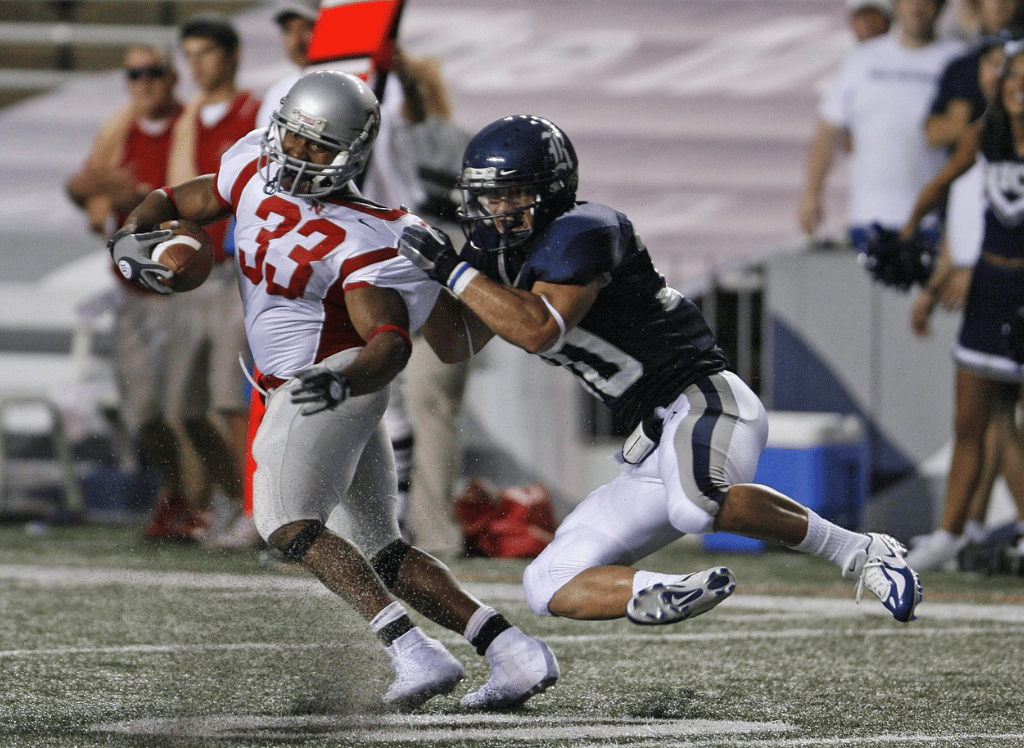Fantasy football is like a game of chess, but instead of knights and bishops, you have quarterbacks and wide receivers. One of the most intriguing pieces on this board is the flex position.
What Does Flex Mean in Fantasy Football?
The flex spot is a versatile position in your lineup that can be filled by a running back, wide receiver, or tight end. This flexibility allows fantasy managers to optimize their lineups based on matchups and player performance.
In recent years, the flex position has become the Ace of spades in fantasy football leagues. It offers a strategic advantage, allowing you to plug in a higher ranked player who might not fit into the typical starting lineup. Whether you're playing in standard scoring leagues or PPR leagues, mastering the flex spot can be the key to winning your league.
The Flex Position Explained
This position gives you the flexibility to adapt to various situations. This spot is crucial because it allows you to maximize your fantasy points by selecting the best available player, regardless of their primary position.
In most leagues, the flex spot is a mandatory part of the lineup, making it essential to understand how to use it effectively. For example, you can slot your highest scoring WR/RB/TE into the flex position. This flexibility can be the difference between a win and a loss in any given week.
Flex in PPR Leagues
PPR leagues, or Points Per Reception leagues, add another layer of strategy to the flex position. In these leagues, players earn points for each reception, making wide receivers and pass-catching running backs more valuable. This means that your flex spot might often be filled by a player who excels in catching passes.
For example, a running back who is heavily involved in the passing game can be a goldmine in the flex position in PPR leagues. Similarly, a wide receiver who consistently gets a high number of targets can also be a great choice. The key is to look for players who have a high floor due to their involvement in the passing game.
Superflex Leagues: The Next Level
Superflex leagues take the concept of the flex position to the next level by allowing you to start an extra positional player than the standard. For example, in a position-less flex league, that second quarterback may be best in the flex spot. This adds a whole new dimension to your fantasy football strategy, as quarterbacks generally score more points than other positions.
In superflex leagues, having two starting quarterbacks can give you a significant advantage. However, it also means that you need to draft wisely and ensure you have enough depth at the quarterback position. The superflex spot can be a overwhelming to manager; it requires careful planning and a bit of luck to pull off successfully.
Drafting for the Flex Position
When drafting for your fantasy football league, it's essential to keep the flex position in mind. This means looking for players who can provide points, whether they're running backs, wide receivers, or tight ends. A viable strategy is to draft players who have a high floor and are involved in their team's offense on a consistent basis.
For example, a running back who is the primary ball carrier for his team or a wide receiver who is the top target can be excellent choices for the flex position. Additionally, keeping an eye on the waiver wire throughout the season can help you find valuable flex players who might have been overlooked during the draft.
Managing the Flex Spot During the Season
Once the season starts, managing the flex spot becomes a weekly task.
It's like being a chef, constantly tweaking your recipe to get the perfect dish.
For instance, if one of your starting wide receivers has a tough matchup against a top cornerback, you might want to move him to the flex spot and start a running back with a more favorable matchup. The key is to stay flexible and be willing to make changes based on the latest information.
The Importance of Matchups
Analyzing the opposing team's defense and how they perform against specific positions can give you a significant advantage. For example, if a team is weak against the run, starting a running back in the flex spot can be a smart move.
Similarly, if a team struggles to defend against slot receivers, starting a wide receiver who plays in the slot can be a great choice. The key is to do your homework and make informed decisions based on the matchups each week.
Flex Players to Target
This often means looking for players who are heavily involved in their team's offense and have the potential to score touchdowns.
For example, a running back who gets goal-line carries or a wide receiver who is the primary target in the red zone can be excellent choices for the flex position. Additionally, keeping an eye on rookies who might have a breakout season can also be a smart move.
The Role of Tight Ends in the Flex Spot
Tight ends can be a bit of a wildcard in the flex position. While they generally don't score as many points as running backs or wide receivers, there are exceptions. Elite tight ends who are heavily involved in their team's passing game can be valuable flex options.
For example, a tight end who consistently gets red-zone targets and has a high number of receptions can be a great choice for the flex spot. The key is to look for tight ends who are more than just blockers and have a significant role in their team's offense.
Injuries
Injuries are an inevitable part of fantasy football, and they can have a significant impact on your flex position. When a key player goes down, it often opens up opportunities for backups and lesser-known players to step up and fill the void.
For example, if a starting running back gets injured, his backup might become a valuable flex option. Similarly, if a top wide receiver is out, the second or third option on the team might see an increase in targets and become a viable flex player.
The Waiver Wire
The waiver wire is a treasure trove of potential flex players. Throughout the season, players who were overlooked during the draft can emerge as valuable assets. Keeping an eye on the waiver wire and making timely pickups can give you a significant advantage.
For example, if a rookie wide receiver starts to show promise or a backup running back gets an increased workload, picking them up from the waiver wire can be a game-changer. The key is to stay active and be willing to make moves to improve your lineup.
The Flex Position in Playoffs
When the playoffs roll around, the flex position becomes even more critical. Every point counts, and making the right decision for the flex spot can be the difference between advancing and going home. This means paying close attention to matchups, player performance, and any late-season injuries.
For example, if a player has a favorable matchup against a weak defense, starting them in the flex spot can give you an edge. Similarly, if a player has been on a hot streak, riding the wave and starting them in the flex position can be a smart move.
Fantasy Football Flex Player FAQs
What is the best strategy for filling the flex position?
The best strategy for filling the flex position is to analyze matchups and choose the player who has the best chance of scoring more points in that particular week. This often means looking for players who are heavily involved in their team's offense and have favorable matchups.
Can a quarterback be used in the flex position?
In superflex leagues, a quarterback can be used in the flex position. This adds a new dimension to your fantasy football strategy, as quarterbacks generally score more points than other positions. However, it requires careful planning and depth at the quarterback position.
How important is the flex position in fantasy football?
The flex position is crucial in fantasy football as it allows you to maximize your fantasy points by selecting the best available player, regardless of their primary position. Understanding how to effectively use the flex spot can significantly boost your fantasy football success.
Summary
The flex position in fantasy football is a versatile and strategic spot that can significantly impact your team's success. By understanding what does flex mean in fantasy football and how to effectively use the flex spot, you can maximize your fantasy points and increase your chances of winning. Whether you're playing in standard scoring leagues, PPR leagues, or superflex leagues, mastering the flex position is essential for any serious fantasy manager.
Please feel free to also check out our other football smacking articles:









